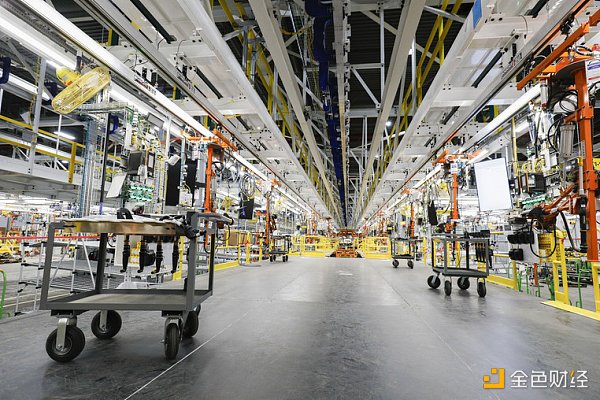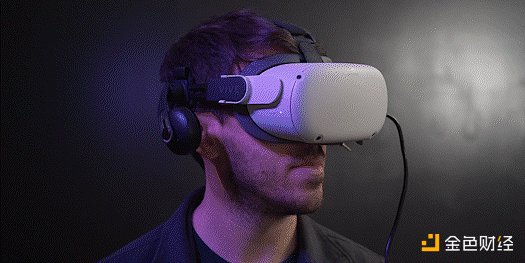How does the Meta-favored Magic Leap achieve a huge leap in the metaverse?
How does Magic Leap significantly advance in the metaverse using Meta-favored technology?Augmented reality (AR) — the process of overlaying virtual elements onto our real world through a full set of head-mounted displays or just a regular smartphone — is everywhere, from Pokémon Go to apps that help you arrange furniture. As one of the missions to create the metaverse, Meta is involved in this field and is reportedly in talks to partner with leading AR startup Magic Leap, according to the Financial Times on Sunday.
Although there are currently no plans to build a Meta-Magic Leap headset, cooperation between the main drivers of the metaverse and major players in the commercial AR field represents a larger trend. While social metaverses are currently difficult to launch, the huge advances in AR technology have already had a profound impact on fields such as medicine, infrastructure, and manufacturing.

Integrating practical AR technology into Meta’s immersive VR platform could play a crucial role in building a virtual world that users are more willing to spend much of their digital lives in.
- What are the advantages and disadvantages of mainstream arbitrage schemes on the LSD track?
- Depth: Worldcoin with ups and downs, can UBI economics in the AI era come true?
- Inventory of BTC Layer2: Stacks, Rif, MintLayer…
Last week, we spoke to Magic Leap’s chief transformation officer, Daniel Diez, ahead of the Financial Times’ report, to learn about the company’s work to incorporate AR into US workplaces and how its shift toward building tools specifically for enterprises helped it develop technology that Mark Zuckerberg is now drooling over. Here’s the edited and condensed conversation for clarity:
Editor: It’s clear now that the development of the metaverse, and AR/VR more generally, is happening on a long-term timeline that’s not necessarily in sync with the hype cycle around any given technology. Is that a benefit or a challenge for your work?
Daniel Diez: The hype cycle is incredibly important. It gets people at least aware of some part of the new technology and then the inevitable disappointment and frustration, but then companies start figuring out how to use it. That’s exactly what’s happening now.
Take AI, for example: In 1997, Newsweek ran a cover story called “The Last Battle of the Brain.” Then came Watson, the AI that beat the world champion at Go, and now we have ChatGPT. In between these cycles, there were revolutionary changes in the AI industry, such as in advertising. This transformation happened between hype cycles and returned in a completely different form.
Editor: Q: What role does Magic Leap play in the AR/VR hardware space?
Daniel Diez: Magic Leap is a tool for working. It’s a very precise tool.
It’s applied to manufacturing scenarios; provides guidance assistance in healthcare and surgery; and is used for training emergency personnel and police officers. These are all precise scenarios that require “sticking” digital content into a scene in the physical world. I can put a digital model of my phone on this table, and it will be there, I can turn my head, and it’s still there, just like a physical object. The device constantly scans the room and generates a digital replica of the room. Its cameras are everywhere, including on my eyes, so it knows where I am and can seamlessly reposition digital content.
This is very different from virtual reality (VR), which is great for gaming and entertainment. But if I throw a tennis ball at you and you’re wearing a Meta Quest Pro, there’s going to be some delay, and you might not be able to catch it. When you think about use cases that require high precision, such as surgery or manufacturing workshops, the possibility of missing a ball due to latency, like in perspective VR, is not acceptable.

Editor: Given that the technology is still in its early stages, how have you been successful in these partnerships? I’m reminded of the disaster between Microsoft’s HoloLens and the US military.
Daniel Diez: One of the adoption barriers for AR is typically the content ecosystem, and that ecosystem is now thriving. Real solutions can be offered now compared to when the first generation of HoloLens or Magic Leap was released, and that’s a huge change.
On the other hand, it’s related to the device itself and the development platform. AR is often associated with bulky, unwieldy, overheating head-mounted displays with unclear visual effects, poor text readability, and a very limited field of view. With the production of our second-generation head-mounted display, we’ve reduced weight by 50%, overall size by 25%, while the computing module and battery are still separated. When we hear people complain about the platforms they’re using, it’s usually because they’ve encountered one or all of these issues, and we’ve addressed them through Magic Leap 2.
Editor: How does AI help power these tools?
Daniel Diez : Magic Leap has built-in a lot of computer vision functionality. A lot of what we’re doing with scanning, creating 3D digital tools, and interpreting the world with our devices is based on machine learning and AI. It’s part of the platform’s inherent characteristics.
As we start thinking about platform-level capabilities and giving vendors access to tools with powerful data processing capabilities to get a lot of data about the physical world, there’s even more room here.
Editor: Do you think enterprise applications will ultimately play a bigger role in driving AR adoption than gaming or entertainment?
Daniel Diez : We deliberately chose to work with employees in manufacturing, healthcare, and the public sector because we knew we could provide real value. These are all areas where people are already used to working with things on their heads. So, on the basis of providing that value, we don’t have to overcome any extra barriers. That equation includes things like form factor, the solutions we’re providing, and price. Those three things will determine how the adoption curve develops. If people can get something truly valuable and helpful by wearing glasses, they’ll become more and more willing to wear glasses.
We will continue to update Blocking; if you have any questions or suggestions, please contact us!
Was this article helpful?
93 out of 132 found this helpful
Related articles
- Analysis of Lybra Finance v2: Creating eUSD Use Cases, Attracting TVL, and Optimizing Tokenomics
- Onion routing in the Lightning Network and how it works
- How to Participate in the zkSync Era Exploration Campaign?
- What Crypto applications are integrated into the Worldcoin App, which has 1.7 million users?
- Chainlink Engineer: How Oracles Connect Web2 and Web3
- What is Schnorr Signature?
- Evening Reading | Why won’t there be a bull market for 23 years?





